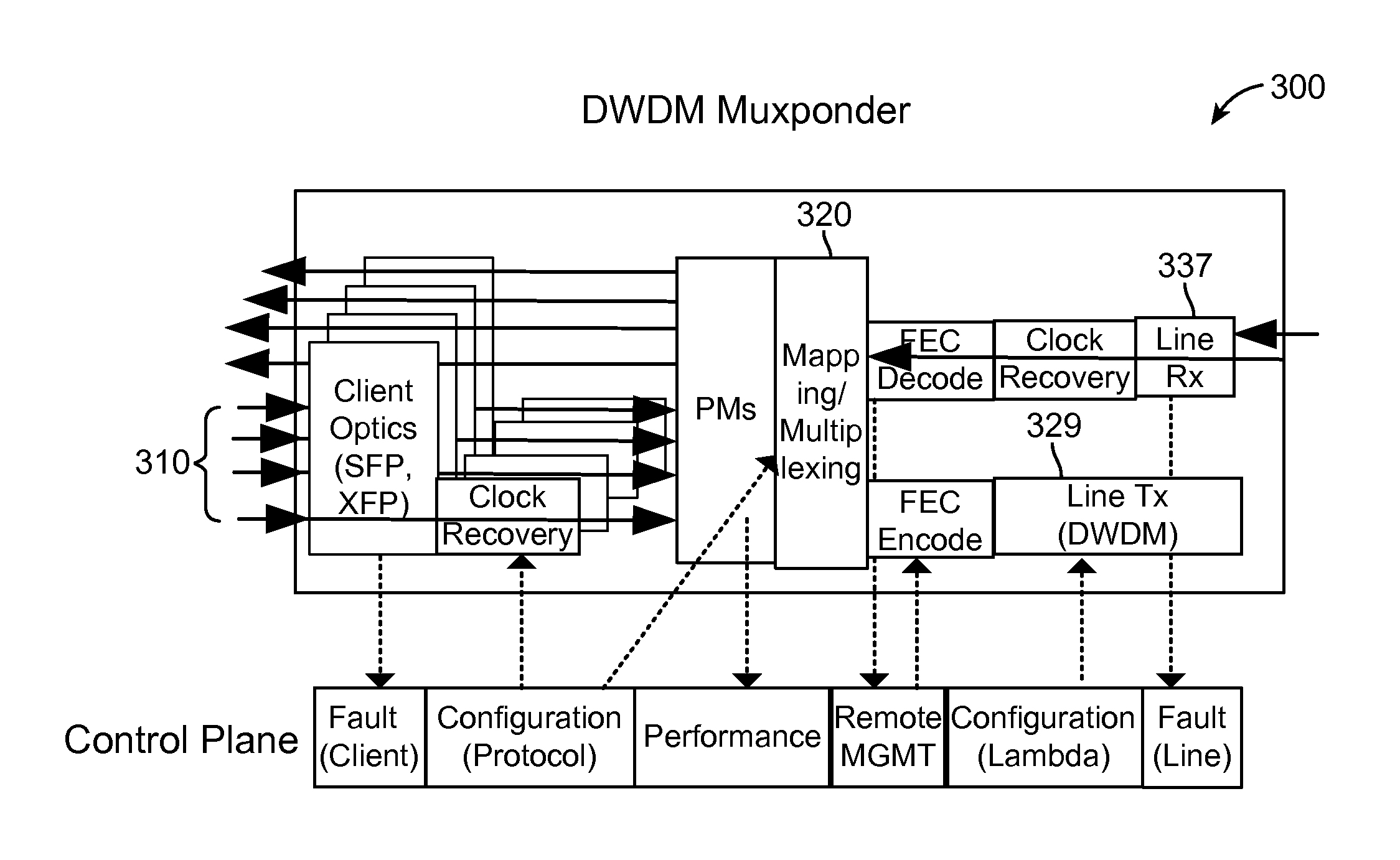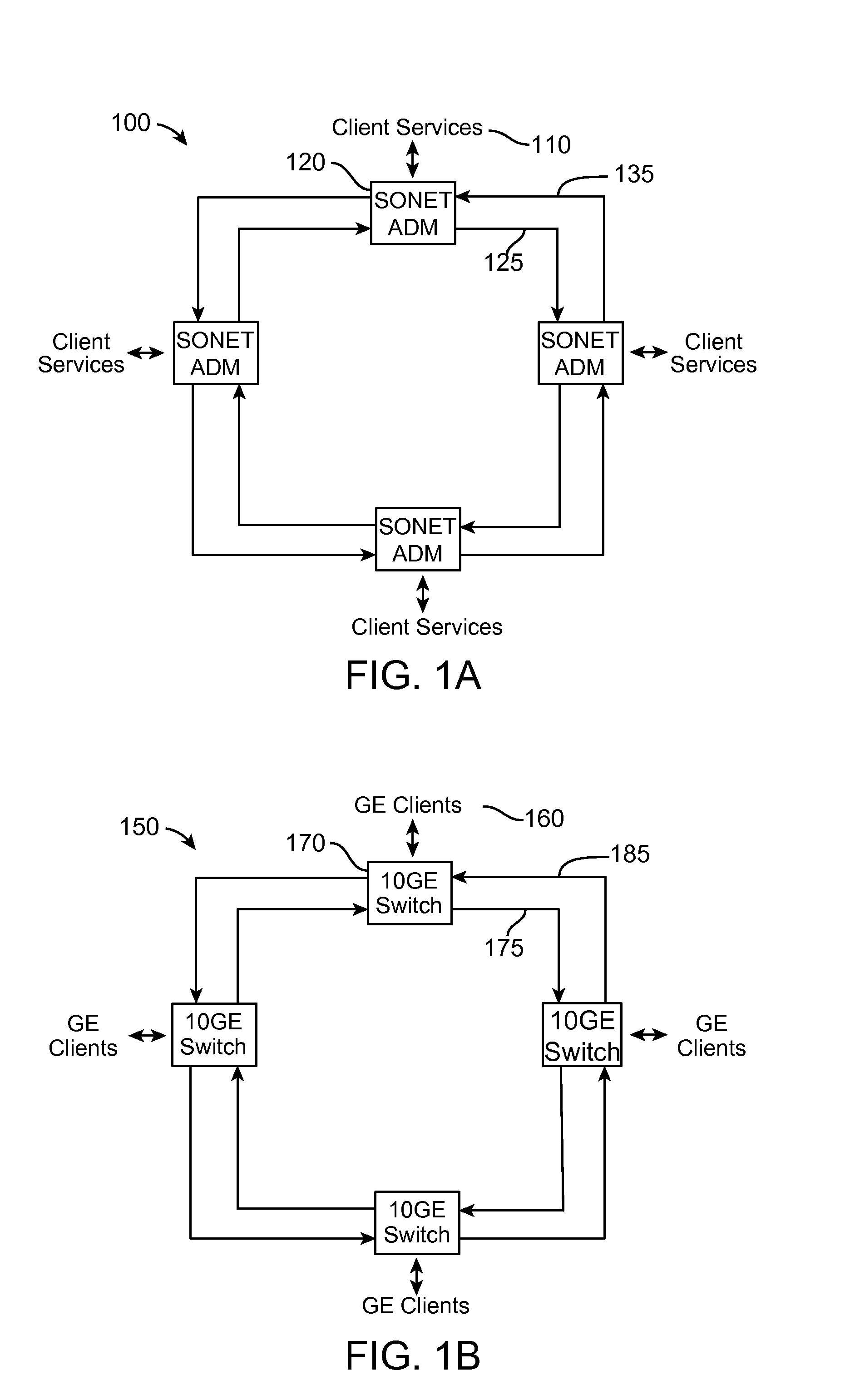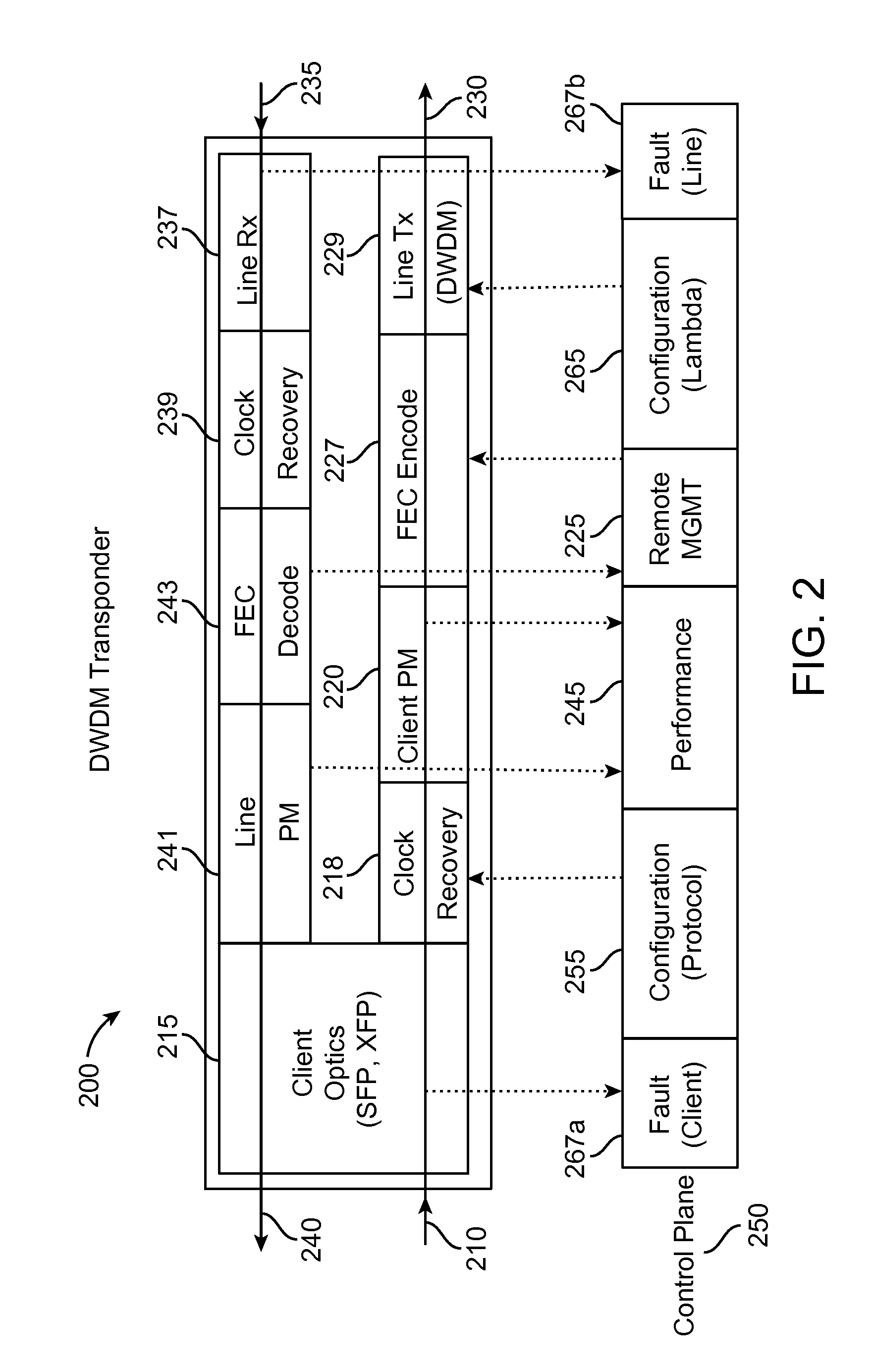Optical Subchannel Routing, Protection Switching and Security
a subchannel routing and protection technology, applied in the field of optical communications, can solve the problems of increasing the cost of high-speed optics with the line bit rate, limiting the implementation of specific protocols, and unable to achieve the desired routing of these four client circuits, so as to achieve the effect of maintaining full visibility of the deployed channel and available bandwidth, facilitating map services, and reducing cost overhead
- Summary
- Abstract
- Description
- Claims
- Application Information
AI Technical Summary
Benefits of technology
Problems solved by technology
Method used
Image
Examples
embodiment 1
Beating of Two Lasers, Both at Fixed Frequencies
[0559]The simplest example of a frequency beating phenomenon may be described as follows. Assume that two laser beams of equal optical power and aligned polarizations are launched into the Polarization Maintaining (PM) optical fiber. Assume that the first laser is tuned to an optical frequency fo (oscillator) and the second laser is tuned to an optical frequency fs (signal) so that the frequencies differ by:
fRF=|fs−fo|, (e.g. fRF=500 MHz);
[0560]Also assume that the linewidth of both lasers (Δfo-FWHM for the oscillator and Δfs-FWHm for the signal laser) are approximately the same and equal to:
ΔfFWHM=Δfo-FwHM=Δfs-FWHM;
[0561]and substantially smaller than fRF (e.g. ΔfFWHM=1 MHz). N.B. sub-index “FWHM” stands for a “Full Width at Half Maximum” linewidth definition.
[0562]When the combined light of both lasers is detected by a photodetector with an electrical bandwidth larger than fRF, but much smaller than the frequencies of optical light f...
embodiment 2
Beating a DWDM Signal Laser at Fixed Frequency (with a Narrow Optical Carrier) with an Oscillator Laser with a Scanned Frequency
[0565]We now expand the first example to a more practical beating system suitable for DWDM applications. We now assume that in addition to all the conditions described above, the frequency of the reference laser, fo, is tuned from fs−fRP−ε to fs+fRF+ε, where ε is much larger than ΔfFWHM. See graph 8400 in FIG. 84 which illustrates this case.
[0566]While scanning the oscillator laser within the said range, the amplitude of the RFDBS output would show two strong peaks (maxima substantially higher than zero) at frequencies of the oscillator laser approximately equal to fo=fs−fRF and fo=fs+fRF, where the equal sign means an equality within + / −ΔfRF-FWHM or a few times + / −ΔfRF-FWHM.
[0567]In this example the RFDBS output is maximized when the oscillator frequencies are set to fo-left and fo-right.
[0568]By analyzing the frequency positions of two RFDBS output peaks ...
embodiment 3
Beating a DWDM Signal Laser at a Fixed Frequency (with a Broad Spectrum) with a Scanned in Frequency Oscillator Laser
[0570]For DWDM modulation formats such as duo-binary (DB), Quadrature-Phase-Shifted-Keying (QPSK) or Differential-Quadrature-Phase-Shifted-Keying (DQPSK), the optical carrier is substantially or totally suppressed and the signal laser spectrum is broad (e.g. several or several tens of GHz) as shown in graph 8500 in FIG. 85.
[0571]In this case, the RFDBS Output signal would in general show two broad spectral lines or more. They can be distinct and separated in spectrum as in FIG. 85 or overlap to some or large extent depending on the choice of detection parameters such as fRF, ΔfRF-FWHM, ΔfO-FWHM, bandwidth of the photodetector, gain and integration constant of the processing circuit, intensity of both signal and oscillator lasers and other design parameters for a particular implementation.
[0572]In one embodiment, the RFDBS signal spectrum, namely the RFDBS output versu...
PUM
 Login to View More
Login to View More Abstract
Description
Claims
Application Information
 Login to View More
Login to View More - R&D
- Intellectual Property
- Life Sciences
- Materials
- Tech Scout
- Unparalleled Data Quality
- Higher Quality Content
- 60% Fewer Hallucinations
Browse by: Latest US Patents, China's latest patents, Technical Efficacy Thesaurus, Application Domain, Technology Topic, Popular Technical Reports.
© 2025 PatSnap. All rights reserved.Legal|Privacy policy|Modern Slavery Act Transparency Statement|Sitemap|About US| Contact US: help@patsnap.com



